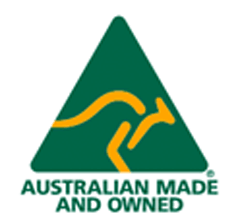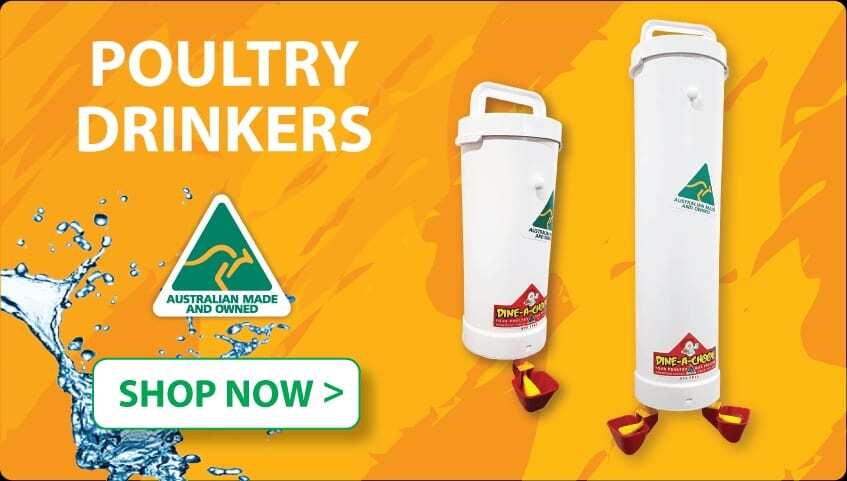Best Chicken Feed for Laying Hens in New Zealand
Best Chicken Feed for Laying Hens in New Zealand
Giving your laying hens the right feed is key to healthy, reliable egg production. Layer feed is specially made for hens, with the right mix of protein, calcium, and other nutrients to keep them strong and productive. It’s not enough to throw a handful of grain their way—hens need a balanced diet that supports the demands of laying eggs.
High-quality layer feed, especially with the FeedSafeNZ logo, guarantees your flock is getting safe, top-quality feed. Pairing this with a waste-reducing feeder like the Dine-A-Chook Chicken Feeder means you’re not throwing money away on wasted feed.
Key Takeaways
- Layer Feed is Specially Designed: Contains 16–18% protein and 3.5–4.5% calcium to meet laying hens' unique needs.
- FeedSafeNZ Certified Brands: Look for the FeedSafeNZ logo for safe, high-quality feed made in New Zealand.
- Premium and Organic Options: Smaller manufacturers offer organic and boutique options that are great for natural feeding.
- Homemade Feed Falls Short: It’s hard to balance nutrients like protein and calcium at home, leading to poor health and low egg production.
- Stop Waste with a Better Feeder: Use a Dine-A-Chook Chicken Feeder to save feed and money.
Why Choose Layer Feed for Laying Hens?
Layer feed is the best option for hens that are actively laying because it’s specifically formulated to support their needs.
Protein is critical for energy and egg formation, while calcium helps produce strong eggshells. The typical protein content in layer feed is 16–18%, which supports both egg production and overall health.
Calcium levels in layer feed range from 3.5–4.5%, a must-have for hens that lay daily. Hens that don’t get enough calcium may lay eggs with thin shells or even develop health problems.
On the other hand, grower feeds or general-purpose grains can leave your laying hens short on these essential nutrients.
Another important difference is the inclusion of vitamins like D3, which helps hens absorb calcium more effectively. Without this, even a high-calcium diet won’t provide the benefits your hens need. Layer feed also includes other important nutrients, like phosphorus for metabolic processes and vitamin A for overall health.
Not all layer feeds have added minerals and vitamins. Look for a "complete layer feed" that has these nutrients. You can also supplement calcium and vitamins separately with poultry feed additives or supplements.
What Is FeedSafeNZ-Certified Feed?
FeedSafeNZ, introduced in 2015, is a programme run by the New Zealand Feed Manufacturers Association (NZFMA) to ensure feed quality and safety.
Brands with the FeedSafeNZ logo undergo testing to guarantee they meet the high standards expected by Kiwi farmers and backyard chicken keepers.

If you want to be confident in the quality of your feed, the FeedSafeNZ logo is a great starting point.
These brands produce feed that’s safe, nutritionally balanced, and free from contaminants. Find accredited brands here.
For those seeking organic or premium options, smaller manufacturers offer high-quality alternatives.Organic feed is often free from synthetic chemicals, making it a great choice for natural feeding. Many premium options are also enriched with extra nutrients or made with non-GMO ingredients, ideal for backyard keepers who value high-quality ingredients.
Where to Buy Layer Feed in New Zealand
Layer feed is widely available in New Zealand, whether you need a small bag or a bulk order for a larger flock.
- Smaller Orders (10–20 kg Bags):
- Bulk Orders by the Tonne:
- MainFeeds: A trusted supplier for farmers needing large quantities.
- Denver Stock Feeds: Known for reliable delivery and consistent quality.
Both options cater to different needs, whether you’re keeping a few hens in your backyard or managing a small-scale poultry farm.
Essential Nutrients for Laying Hens
A good layer feed should include:
- Protein (16–18%): Supports muscle health and energy for egg production.
- Calcium (3.5–4.5%): Essential for hard eggshells.
- Vitamins A, D3, and E: Promote overall health and immunity.
- Phosphorus and Magnesium: Key for bone strength and metabolic functions.
Meeting these levels with homemade feed requires expert knowledge. Without proper balance, your flock could develop nutritional deficiencies.
Why Homemade Layer Feed Often Falls Short
Plenty of chook keepers in New Zealand swear by making their own feed at home, and many say it hasn’t affected their hens' egg production or quality.
Making your own layer feed might seem like a cost-effective and personalised option, but it’s incredibly difficult to meet the nutritional needs of laying hens without expert knowledge.
A layer hen needs a diet with 16–18% protein to keep up with egg production demands. This can be challenging to achieve with homemade mixtures, as many common grains like corn and wheat are low in protein.
Calcium is another essential nutrient that’s hard to balance in homemade feed. Hens laying eggs daily require 3.5–4.5% calcium in their diet to produce strong eggshells.
Without enough calcium, hens will draw from their own bones, potentially leading to osteoporosis or egg-binding issues. Store-bought layer feed have these nutrients in right quantities.
Homemade feeds often lack key vitamins such as D3, which helps hens absorb calcium, or phosphorus, which is critical for metabolism.
Poorly balanced feed can lead to brittle eggshells, a drop in egg production, or even poor feather quality and weight loss in your hens.
Common Feeding Mistakes and How to Avoid Them
Many backyard chicken keepers unknowingly make feeding choices that don’t fully meet their hens’ nutritional needs. One common issue is relying on grain mixes or scratch feed as a primary diet. While these may look appealing and are often marketed as popular options, they tend to be low in protein, with levels as low as 15%. This isn’t enough to support healthy egg production, particularly for hens recovering from moulting or those laying daily.
Another issue is selective feeding. Chickens often pick out the tastiest bits in grain mixes, such as corn or sunflower seeds, and leave behind essential components. This means your hens are missing out on important nutrients like protein, calcium, and vitamins. Grain mixes also attract pests like rats, as uneaten feed is left behind.
The best solution is to switch to a crumbed or pelleted feed. These are scientifically balanced to include 16–18% protein, at least 3.5–4.5% calcium, and other key nutrients like Omega-3 fatty acids for healthier eggs. Crumbed or pelleted feed prevents selective feeding, as every bite contains the nutrients your hens need.
If your hens are recovering from moulting or showing signs of a dietary deficiency, consider adding a vitamin and mineral supplement to their diet. This can help speed up feather regrowth and boost their overall health. Supplements are also beneficial for breeding birds or hens facing stressful conditions like weather changes.
Practical Tips for Feeding Your Hens
- Use Layer Feed as a Staple Diet
While treats like fruit or greens can add variety, the majority of your hens’ diet should be a high-quality layer feed. This ensures they get the nutrients they need daily without overloading on low-nutrition scraps. - Supplement with Calcium if Needed
Even with a good layer feed, hens may need extra calcium depending on their laying rate. Crushed oyster shells or limestone grit (offered separately and not mixed into the feed) can give them an extra boost without overloading their main diet. - Provide Clean, Fresh Water
Egg-laying takes a lot of energy, and dehydration can reduce production. Make sure your hens always have access to clean water, preferably with a system like a Dine-A-Chook Chicken Drinker that prevents contamination. - Store Feed Properly
To keep feed fresh and free from pests, store it in a cool, dry place. Use sealed containers to prevent moisture and rodents from getting in, as damp or mouldy feed can be harmful to hens.
Stop Wasting Feed with a Better Feeder
Even the best feed is wasted if it ends up on the ground or eaten by pests like rats and sparrows.
A waste-reducing feeder, such as the Dine-A-Chook Chicken Feeder, helps solve this problem. These feeders are designed to prevent spillage and keep pests out, saving you money while ensuring your hens have clean, accessible food.
Using a feeder like this can reduce feed waste almost completely, especially if you’re currently using open bowls or trays that hens can easily knock over.
It’s a simple upgrade that pays for itself quickly in saved feed costs.

Giving Your Hens the Best Feed
Your hens rely on a balanced diet to stay healthy and productive. Choosing a high-quality layer feed ensures they’re getting the protein, calcium, and essential nutrients needed for strong eggshells and consistent laying.
Pair the right feed with tools like a waste-reducing Dine-A-Chook Chicken Feeder to make sure every grain goes to good use.
Happy chicken keeping!
Related articles:






